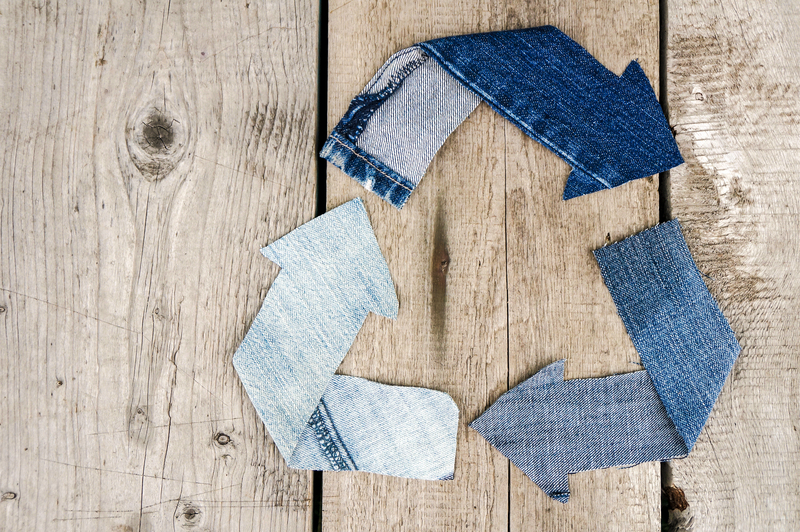The Urgency of Addressing Microplastic Pollution
Microplastic pollution has become a pervasive environmental threat, infiltrating every corner of the globe--from the remote Arctic ice to bustling urban centers. As societies become increasingly aware of the environmental impacts of human activities, addressing the rise of microplastic contamination is more crucial than ever.
This article explores the origins, impacts, and potential solutions to microplastics pollution, tackling why immediate action is necessary for the health of our planet and its inhabitants.

What Are Microplastics?
Microplastics are tiny plastic particles typically less than 5 millimeters in diameter. These minuscule plastics can be primary microplastics (manufactured at a small size, such as microbeads in cosmetics) or secondary microplastics (created through the breakdown of larger plastic debris through weathering and fragmentation).
- Primary microplastics: Used in products like exfoliating scrubs, toothpaste, and industrial abrasives.
- Secondary microplastics: Result from wear and tear of tires, textile fibers in washing machines, and the degradation of larger plastic items.
These tiny plastic particles are ubiquitous in marine, freshwater, and terrestrial environments and are increasingly found in food, water, and even the air we breathe.
Sources of Microplastics Pollution
Microplastics enter ecosystems via various human activities. Understanding their primary sources is vital to tackling microplastic contamination.
Main Origins of Microplastics
- Personal Care Products: Microbeads in face washes and scrubs are washed down the drain and flow into water bodies, often unfiltered by wastewater treatment plants.
- Laundry and Synthetic Textiles: Each time we wash synthetic clothes, tiny fibers break off and are carried by wastewater into rivers and oceans.
- Tire Wear: Vehicle tires shed microplastics as they wear down on roads, which then run off into waterways during rainfall.
- Industrial Processes: Manufacturing and transportation of raw plastic materials can release plastic pellets (nurdles) into the environment.
- Litter and Plastic Waste: Larger plastics degrade over time due to sunlight, wave action, and wind, fragmenting into microplastics.
How Widespread Is Microplastic Contamination?
Scientific studies have found microplastics in every corner of the planet. From Arctic sea ice to the deepest points of the Mariana Trench, these plastics are omnipresent. It is estimated that there are trillions of microplastic particles in the world's oceans alone.
- More than 51 trillion microplastic fragments are floating on the surface of oceans worldwide.
- Average bottled water contains hundreds of microplastic particles per liter.
- Seafood, table salt, beer, and even tap water have all been found to carry microplastic contamination.
The urgency of addressing microplastic pollution is underscored by the reality that it is not just an oceanic issue; it is now an everywhere issue.
Why Is Microplastic Pollution So Dangerous?
The risks posed by microplastic pollution are vast and complex, affecting ecosystems, human health, and the global economy.
Environmental Impact of Microplastics
- Harm to Marine Life: Animals often mistake microplastic particles for food, which can lead to malnutrition, starvation, and death. Microplastics can block digestive tracts, reduce feeding, and transfer toxic chemicals to their tissues.
- Food Chain Contamination: Microplastics accumulate in the bodies of small organisms and move up the food chain, eventually reaching fish, birds, and humans.
- Impact on Soil Health: Microplastics in agricultural lands may affect soil structure, crop growth, and water retention capacity.
- Transport of Pollutants: Microplastics can absorb and transport dangerous chemicals such as pesticides, heavy metals, and endocrine disruptors, spreading contaminants far from their original sources.
Risks to Human Health
Microplastic exposure is increasingly recognized as a potential public health threat. Although long-term consequences are still under investigation, existing research presents several concerns:
- Ingestion and Inhalation: Microplastics are found in food and water, as well as in household dust, meaning most people ingest or inhale microplastics daily.
- Toxic Chemical Leaching: Microplastics may release hazardous chemicals such as BPA, phthalates, and flame retardants, which are known to disrupt hormones and cause other health risks.
- Physical Damage: Tiny particles can migrate through the digestive system and may lodge in tissues, causing inflammation and other potential harm.
The full scale of human health risks from plastic micro-pollutants remains to be seen, but the warning signs are serious enough to merit urgent research and policy intervention.
Main Challenges in Reducing Microplastics Pollution
Detection and Measurement Difficulties
Identifying and quantifying microplastic pollution is scientifically challenging. Their tiny size and diverse composition often require specialized laboratory techniques, and there is no global standard for measuring microplastic concentrations.
Limited Wastewater Treatment Capacity
- Most wastewater treatment plants are not fully equipped to filter out microplastics, meaning they continue to enter rivers and oceans unchecked.
- Developing countries often lack advanced wastewater infrastructure, compounding the issue.
Persistent and Non-biodegradable Nature
Plastics degrade very slowly. Even with efforts to reduce plastic use, existing microplastics persist in the environment for centuries. Their presence in soil, water, and air creates a "legacy pollution" situation that is hard to reverse.
Global Supply Chains and Consumer Behavior
The globalized economy means plastic products and pollutants are ubiquitous. Addressing the microplastics problem requires changes at every stage--from production and use to waste management and consumer recycling behavior.
Solutions and Strategies: How to Combat Microplastic Pollution
1. Policy and Legislative Action
- Bans on Microbeads: Some countries (including the USA, UK, and Canada) have banned the use of microbeads in personal care products, which constitutes a significant step toward reducing intentional microplastic use.
- Plastic Waste Regulation: Implementing bans or fees on single-use plastics, strengthening recycling mandates, and improving producer responsibility can curtail the flow of plastic debris into ecosystems.
2. Innovation in Filtration and Wastewater Treatment
- Developing advanced filtration systems for washing machines and wastewater treatment plants to capture microplastic fibers and particles before they reach water bodies.
- Investing in research and development for innovative materials that produce fewer or no microplastics upon degradation.
3. Corporate Responsibility and Industry Change
- Product Redesign: Companies can shift towards using natural fibers in textiles and reformulate products to remove plastic microbeads.
- Extended Producer Responsibility (EPR): Mandating manufacturers to take responsibility for their products throughout their life cycles can incentivize design changes, reduced packaging, and better waste management.
4. Consumer Awareness and Behavioral Change
- Informed Choices: Consumers can select products free from microbeads, avoid synthetic textiles, use washing machine filters, and prioritize items with minimal or biodegradable packaging.
- Proper Disposal: Avoid littering and participate actively in recycling programs. Small actions like using reusable bags and bottles can significantly reduce overall plastic waste.
5. Scientific Research and Monitoring
- Global Monitoring Networks: Building standardized research and monitoring networks to track microplastic distribution and impacts in real time.
- Health Studies: Supporting research into the health effects of microplastics exposure is critical for developing policies and protective regulations.
Case Studies: Global Progress on Tackling Microplastic Pollution
United Kingdom
- Ban on Microbeads: In 2018, the UK government enacted one of the world's strictest microbead bans, stopping companies from selling rinse-off cosmetics and personal care products containing plastic microbeads.
European Union
- Policy Leadership: The European Chemicals Agency has prioritized restricting intentionally added microplastics to cosmetics, detergents, agricultural products, and other non-industrial applications.
Australia
- National Waste Policy: The country's initiatives focus on raising consumer awareness, investing in plastic alternatives, and enhancing waste management systems to reduce plastic entering waterways.

What Can Individuals Do to Fight Microplastic Pollution?
Although large-scale solutions require government and industry action, individual choices matter. Here are some effective steps anyone can take to reduce microplastic pollution:
- Say no to microbeads: Read ingredient labels and avoid personal care products containing "polyethylene" or "polypropylene."
- Limit synthetic clothing: Choose natural fibers like cotton, wool, or hemp.
- Use filtration systems: Install filters in washing machines or use microfiber laundry bags to capture plastic fibers.
- Participate in cleanups: Join local river, beach, or park cleanups to remove plastic litter before it becomes microplastic pollution.
- Educate others: Spread awareness about the dangers of microplastic contamination and advocate for policy changes.
The Future: A Call for Urgency and Action
The environmental and health costs of unchecked microplastic pollution are only beginning to be understood. Without serious, coordinated, and urgent action, microplastics could irrevocably harm ecosystems and human well-being.
Now is the time for a systemic shift--one that involves rethinking our use of plastics, investing in innovative solutions, and enacting robust regulations. Each stakeholder--from policymakers and industry leaders to scientists and consumers--has a crucial role to play in tackling this invisible but insidious form of pollution.